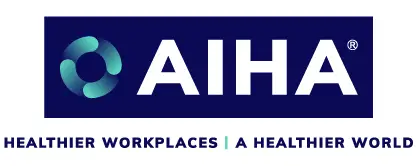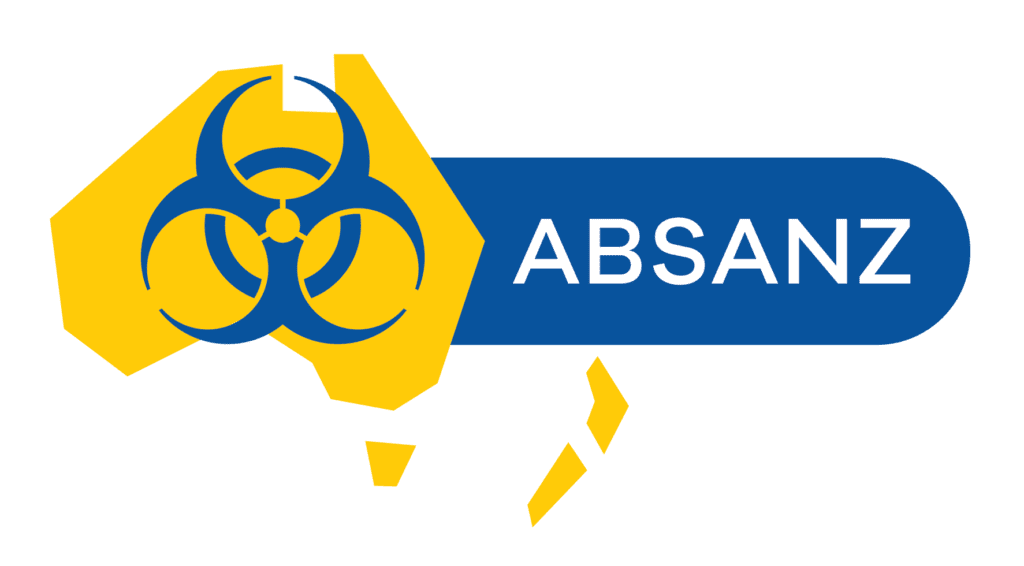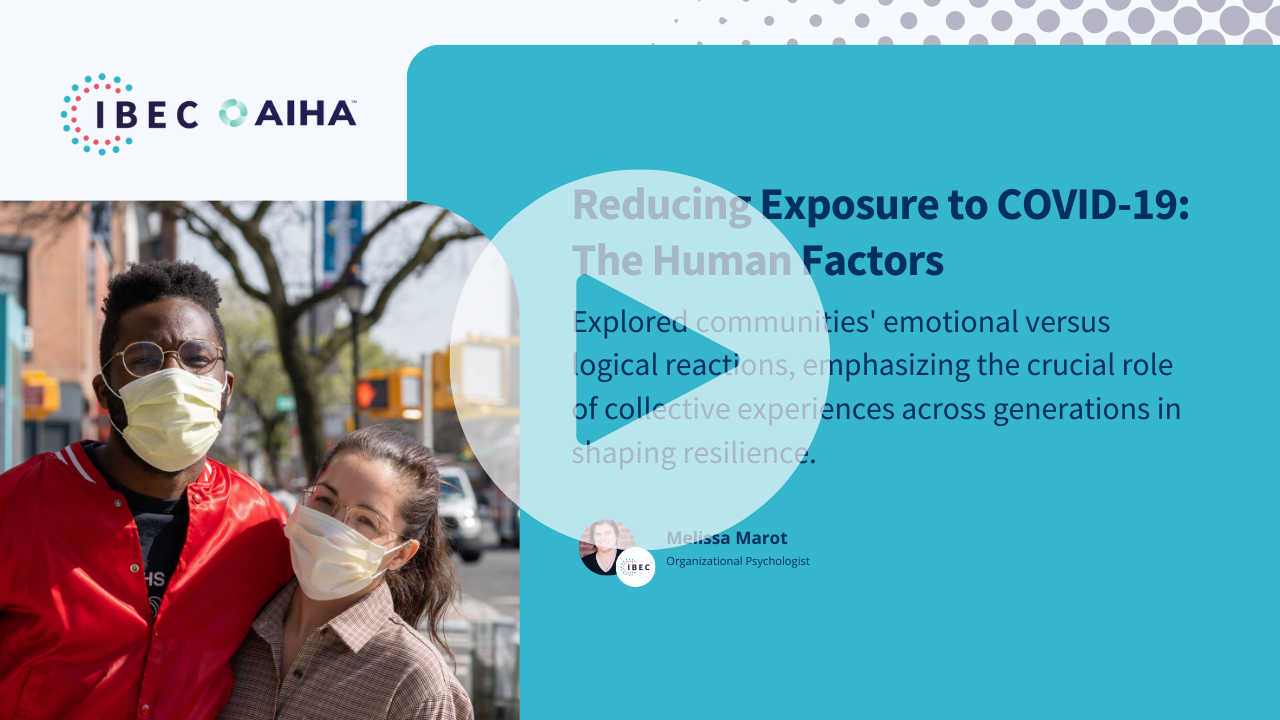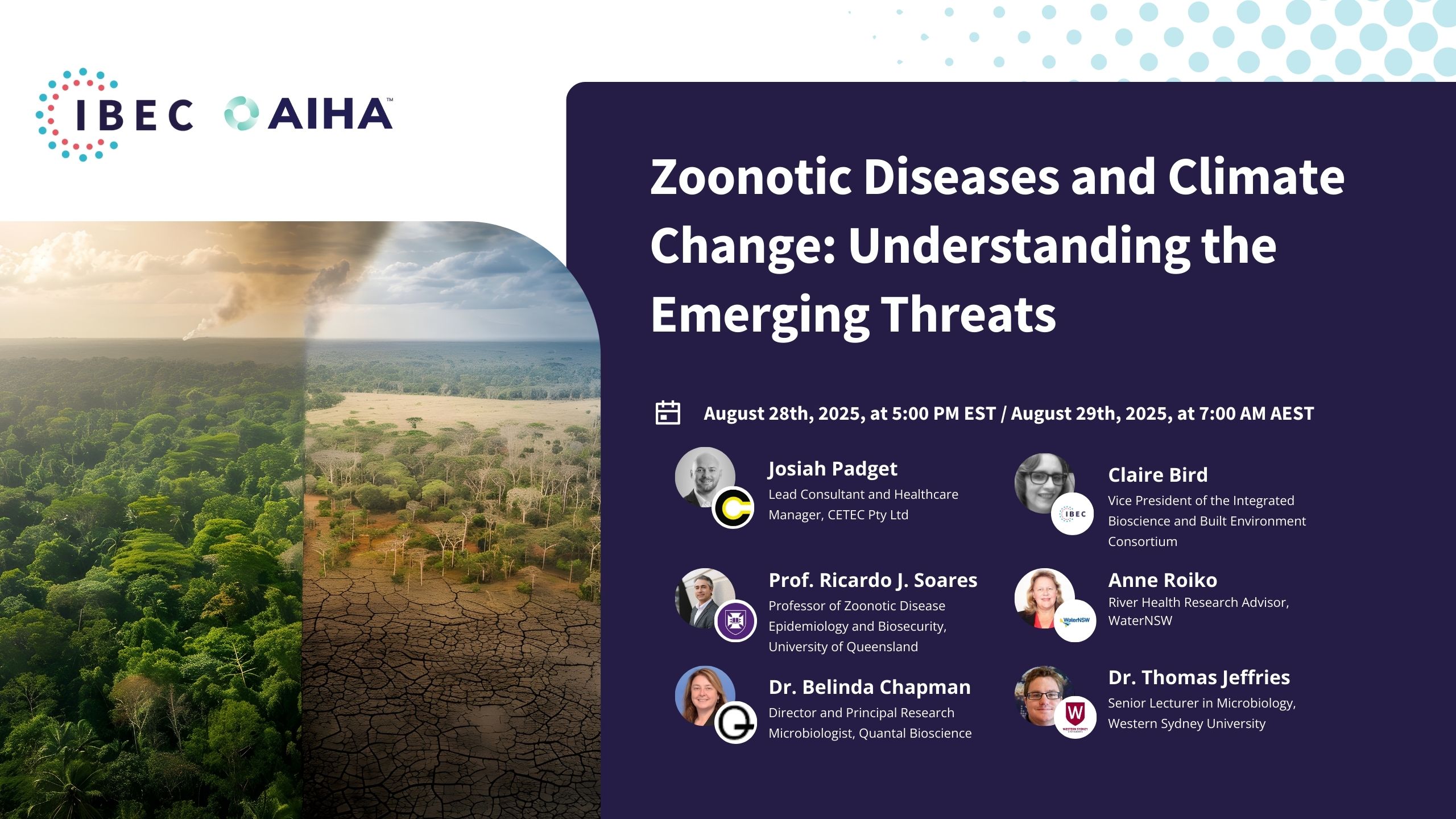CLEAN Lessons Learned
Reducing Exposure to COVID-19: The Human Factors
During a comprehensive 90-minute session, Kenneth Martinez led a discussion delving into the complexities of community behavior, governmental response, and resilience amidst the pandemic. With insights from Dr. Melissa Marot, the conversation explored communities’ emotional versus logical reactions, emphasizing the crucial role of collective experiences across generations in shaping resilience. Claire Bird and Brett Cole contributed by highlighting the varied governmental strategies in places like Australia and the US and the challenges of changing public perspectives. Dr. Marot underscored the importance of not just top-down governmental directives but also the role of other organizations in effective community engagement. The session concluded with participants appreciating the valuable insights provided, especially in navigating pandemic stresses and understanding the intricacies of community responses.
- Community-Centric Approach: The emphasis should be on protecting and benefiting the community rather than individualistic perspectives.
- Emotional Polarization: Communities often react more to emotions than logic, leading to polarized views and responses.
- Generational Resilience: Different generations, such as Baby Boomers and Gen X, might possess varied resilience levels based on their collective experiences.
- Governmental Strategy Variance: Different governments worldwide have showcased a range of responses to the pandemic.
- Organizational Preparedness: Organizations and governments might have prior simulations and strategies, but their effectiveness varies by country and situation.
- Engaging the Community: The importance of engaging communities from a top-down governmental perspective and other organizations and grassroots efforts.
- Shift in Focus: It’s sometimes necessary to shift the narrative to bring about behavioral change, as demonstrated by strategies that convince students to wear masks.
- Health Prioritization: There’s been a noticeable increase in focus on health in recent decades, which might influence collective community reactions.
- Global Comparisons: Observing responses from countries like Australia and the US can provide valuable insights into effective strategies and pitfalls
- Importance of Dialogue: Sessions like these are essential in understanding, navigating, and bettering our responses to unprecedented challenges like a pandemic.

Kenneth Martinez
IBEC’s Chief Science Officer and Board founding member
Ken is an Environmental Engineer and Industrial Hygienist with experience in leading and conducting large-scale research, managing programs in occupational safety and health and emergency response; and creating and teaching professional development courses. He has over 33 years of CDC expertise in hazardous agent exposure characterization and mitigation control practices in the manufacturing and healthcare industry. Since retiring from the CDC, he served eight years in the CBRN space as a consultant focusing on a national biodetection program. Mr. Martinez is a recognized subject matter expert in biological agents, including infectious disease and bioterrorism agents.

Claire bird
IBEC’s Executive Secretary
Claire Bird, the new Executive Secretary at IBEC, is a passionate scientist and entrepreneur, driving healthier building standards through her laboratory management, training, and consulting expertise. Through LITMAS laboratory, she’s committed to delivering established and innovative solutions. As a dedicated advocate, Claire volunteers as an expert in indoor air quality (IAQ) across global professional bodies, emphasizing the need to protect occupants from chemical and microbiological hazards. Her mission amplifies the importance of IAQ within the industry and regulations. Moreover, she collaborates internationally, ensuring timely, relevant industry standards that align promptly with current scientific knowledge.

Brett Cole
Managing Director & Chief Occupational Hygienist at Biosafety Pty Ltd
Brett Cole is Managing Director/Chief Occupational Hygienist – Biosafety International/Member of Indoor Air Quality Association of Australia and Education & Training Committee (ETC) of Association for Biosafety for Australia and New Zealand.

Melissa Marot
Organizational Psychologist
Dr. Melissa Marot has a specialist interest in well-being and performance at work. She has many years of experience working with people and organizations, ranging from Tech Start-Ups, United Nations, International Disaster Recovery, Emergency Services, Defense, and Public Service to various organizations in the Private Sector.
Kenneth Martinez 00:06
Good evening. My name is Ken Martinez. I’d like to express my gratitude for your participation tonight in this “Lessons Learned” series. It’s a delightful evening, and for our colleagues in Australia, I’ve heard the morning is equally splendid with the sun shining brightly. I currently serve as the Chief Science Officer for IBEC and have the credentials of a certified industrial hygienist and environmental engineer. My career of 33 years at the CDC revolved primarily around biological agents, focusing on exposure characterization and control. This encompasses indoor air quality assessments, mold contamination, cleanup, and infectious diseases. Working with IBEC has been rewarding. Our consortium, the Integrated Bioscience and Built Environment Consortium, acts as a bridge connecting science with real-world applications. Our goal is to assure people that they can safely gather indoors during the ongoing pandemic. By intertwining various technical disciplines and knowledge areas, we offer solutions that safeguard both buildings and their occupants. Despite understanding the significance of vaccination and diagnostics during this pandemic, we must not overlook that COVID-19 is airborne. Hence, environmental mitigation techniques, like enhancing air filter efficiency, using portable air cleaners, and wearing masks, are crucial in conjunction with medical measures. Our three main pillars are people, pathogens, and buildings. I encourage everyone to delve deeper into our mission and vision by visiting our website at weareibec.org. Being a nonprofit, we welcome you to join us and contribute to our cause of reshaping the built environment.
Now, let’s move to introductions. I’m joined today by Brett Cole and Dr. Claire Bird. Brett will be introducing our speaker for tonight, Dr. Melissa Marot. Dr. Bird has a history rich in indoor and outdoor environmental research spanning over 20 years. After co-directing the Community and Wildlife Cooperative for several years, she pursued her education, first at the University of Rochester and then a doctorate from the University of Essex. Her specialty lies in detecting and characterizing airborne microorganisms. Her post-doctoral journey took her to Australia where she played a pivotal role in establishing the environmental biotechnology facility at Flinders University. Claire has worn many hats, from academic pursuits in the UK and Australia to overseeing the remediation of Australia’s most extensive water and fire damage restoration projects. Additionally, she founded Littmus, an Australia-based lab and consultancy that focuses on inspecting and analyzing indoor chemical and microbial contamination. Dr. Bird has served as the president of the Indoor Air Quality Association of Australia and remains a prominent figure in building microbiome and microbial assessment.
Next, meet Brett Cole. With over 20 years in contamination control across various domains including life sciences, healthcare, and the food & beverage industry, his expertise is unparalleled. His academic and professional journey encompassed environmental microbiology, chemistry, occupational hygiene, and toxicology. Brett’s experience covers a vast array of contamination projects across Australia, New Zealand, North America, and the Asia Pacific. During the COVID-19 outbreak, he collaborated with two federal government task forces focused on personal protective equipment and ventilators. He also contributed to the Indoor Air Quality of Australia guidelines for the validation of viral contaminated buildings. Without further ado, let’s hear from Brett as he introduces our keynote speaker tonight.
Brett Cole 05:01
Thank you for the warm introduction, Ken. I am honored to present Dr. Melissa Marot to you all. Dr. Marot boasts a rich tapestry of experiences, from working with tech startups and the United Nations to emergency services and the public sector. Her specialty lies in organizational psychology and neuropsychology, with a strong inclination towards neurosciences. Melissa has dealt with a plethora of psychological issues, such as growth challenges, leadership dynamics, stress, burnout, and resilience building in intricate workplace environments. Her zest for connecting with diverse cultures and approaches is evident not only in her professional engagements but also in her travel escapades. Ladies and gentlemen, I proudly introduce Dr. Melissa Marot.
Melissa Marot 06:09
Thank you for that, Brett. It’s fantastic to be here today. I’m excited to chat with you. I’m about to bring my slide pack up on screen. I assume everyone can see that. Once again, thank you so much for the introduction, Brett. As mentioned, I’m an organizational psychologist and neuropsychologist. When I mention this, people often ask, “What does that mean?” There was a hint in Brett’s introduction, and I’m grateful for it. I also extend my gratitude to iBag for inviting me to speak today.
In my capacity as an organizational psychologist, I’ve collaborated with organizations for over 20 years, notably focusing on emergency services, disaster recovery, and disaster response, particularly from the Human Factors and organizational perspectives, as well as on an individual level. I’ve closely worked with organizations post the 2009 bushfires in Australia, flood recovery efforts, and the bushfires we experienced in 2019, right before the pandemic struck in 2020.
Neuropsychologically speaking, I’m deeply interested in neurosciences, especially in understanding how our brain reacts during crises and emergencies. Such reactions significantly impact our behavior, not just on an individual level but group-wise too. I hope to shed light on navigating a prolonged crisis, such as our current pandemic, as opposed to shorter crises like bushfires or floods in Australia, and how to adapt back to public life amidst or after such crises.
Today, I’ll discuss human factors. As I proceed with my presentation, I encourage you to think of questions. We’ll have a Q&A session afterwards.
Our exploration will cover the psychological response during a prolonged crisis, the stages of disaster recovery, and strategies to navigate returning to public life post such traumas. Let’s reflect on your own psychological, emotional, physical, and behavioral responses. How have you felt? How have your teams reacted? Most crucially, how have these responses evolved since the pandemic’s onset?
I vividly recall when the pandemic was first announced. I was at Melbourne Airport when flights started getting canceled due to the lockdown. The emotional atmosphere was palpable. Now, reflecting on that initial moment, there was evident panic and shock. People’s reactions vary, but common themes include replaying events, feelings of anxiety, anger, sadness, guilt, and numbness. Some might avoid discussing the crisis, while others immerse themselves in it, evident from behaviors like doom scrolling on social media.
Crises can reshape our worldview, fostering mistrust towards others and the environment. We become self-critical, questioning our actions and decisions. These sentiments are not just individual but manifest on a societal scale.
From a neurological perspective, our limbic system becomes hyperactive during a crisis. Our bodies and minds are on high alert, primed for potential threats. This heightened sensitivity can lead to mistaking non-threatening situations as alarming, causing jumpiness and sleep disruptions.
With his hyperactive nervous system, all these things begin to accumulate. Interestingly, with these common reactions in a hyperactive nervous system, such hyperactivity and being on high alert doesn’t only manifest in individuals, but also radiates throughout groups. You might observe groups behaving in a heightened state, constantly on the lookout for threats. This phenomenon isn’t confined to an individual context; it’s also evident in a social context. Reflect on what you’ve observed within yourself and others around you, especially in platforms like social media and the broader societal setting.
In the context of a long-term crisis like the current pandemic, which is not a fleeting issue but a persistent one, the effects differ. Over time, individuals grapple with mental and emotional fatigue that sneaks up during prolonged stress periods. This crisis induces extended cognitive activity, meaning our brains tirelessly work to solve problems, react, respond, and adapt. In places like Melbourne, with recurrent lockdowns and changes, our cognition continually adjusts, leading to mental exhaustion. Over time, a gamut of emotional and physical symptoms emerges, varying across individuals. Emotionally, we might feel irritation, annoyance, and many other emotions. Physically, we might feel drained, gain or lose weight, or experience fluctuations in motivation. All these changes affect our behavior. Over time, this can result in detachment and apathy, feelings of isolation from society, and either a deep focus on the stressor or an urge to distance oneself from it. In the end, this mental weariness can culminate in burnout – something now termed “COVID burnout,” referring to the myriad challenges posed by COVID-19 and its accompanying restrictions.
Feedback from viewers highlights feelings of anxiety, fear, and insecurity, feelings that many share. As we transition to a new phase of living with the virus, it’s challenging for psychological professionals and business supporters alike to help manage this evolving scenario.
Let’s delve into the stages of disaster recovery. This knowledge helps us understand communal reactions to events like the pandemic. When we first heard of COVID-19, we were in the “heroic stage.” Communities rallied, and there were palpable feelings of altruism and grief over the losses. This was followed by the “honeymoon stage,” where a shared experience solidified communal bonds. The pandemic’s universality set it apart from other crises – everyone was affected, fostering a profound sense of shared experience. However, as time wore on, the “disillusionment stage” set in, marking the arduous journey of rebuilding. The spotlight on the crisis dims, yet the recovery hasn’t fully commenced. Eventually, we move to the “reconstruction or recovery” phase, which some might argue we’re beginning to enter now.
Throughout these stages, our psychological reactions are pivotal. During a protracted crisis, feelings of anger, helplessness, fear, disappointment, guilt, shame, and sadness are common. In times of unforeseen challenges, our reactions may surprise us, reminding us that people aren’t always themselves under duress. It’s poignant to note that, while once the current situation was dubbed the “new normal,” for many, it has simply become the norm.
This is the way it is. Currently, there’s a mix of emotions: a sense of sadness, excitement about possible changes, and feelings of isolation where some may want solitude or even feel irked by others. These feelings can manifest as numbness, detachment, withdrawal, and a sense of disappointment. As we transition into the third stage of disaster recovery, a decline in productivity and concentration difficulties may arise. We’ve observed this especially in the work environment, partly due to challenges related to working from home.
In response to crises, a typical human emotion is to feel overwhelmed or disengaged. Organizations find this challenging to handle. Given these emotions, how should we reenter public life? I thought we could explore several ways to address this both at individual and group levels. It’s essential not only to consider individual perspectives but also organizational and community viewpoints. Everyone is affected by this crisis, not just professionals offering support.
A significant concept to understand during crises is resilience. While the term “resilience” is common, its precise definition varies. It’s not merely about “bouncing back” but could also be about adapting or shifting perspectives in challenging times. Resilience exists not only within individuals but also within systems, encompassing a broader societal and cultural perspective.
A key component of resilience is believing in one’s ability to cope. Research by the Australian Red Cross and the Australian Psychological Society reveals that optimism and hope are crucial after experiencing a crisis. Optimism isn’t just about always seeing the positive; it involves understanding that crises are impermanent, not all-pervasive, and are not personal attacks.
When addressing resilience, generational differences may come into play. For instance, baby boomers who lived through past pandemics like the Asian and Hong Kong flu might draw upon those experiences. Different backgrounds and experiences shape our resilience, as seen with refugees who might be accustomed to certain crises but find other challenges more disconcerting. The main point is that experiences vary, and there’s no right or wrong perspective.
To cope with mental fatigue, staying organized, managing stress responses, and taking frequent breaks are beneficial. Working from home has deprived many of casual interactions, contributing to increased mental fatigue. Mindfulness activities and self-care are essential tools for support.
Concerning the free flow of information, it has its advantages and drawbacks. While being informed provides a sense of control, an excess of information, especially in stressful situations, can lead to a negative bias. Thus, we might focus more on adverse outcomes, leading to heightened anxiety and concern.Our assessment of information can become skewed and biased. Tunnel vision in terms of information can develop, leading us to selectively focus on information that supports and reinforces our worldview.
When considering how we can effectively work with others, especially in actions meant to build trust, we, as professionals, often operate from an evidence-based, scientific perspective. Many of us have undergone extensive training. Personally, I’ve spent roughly 12 years training in various capacities, with degrees, masters, PhDs, and other qualifications. This allows me to critically analyze information. Therefore, I might approach situations from a different perspective than someone without similar training. Discussing our psychological responses to events, such as the pandemic or vaccinations, I recognize the need to build trust with others. While I come from a distinct perspective, how can I foster open communication with those who may not share my training background? The key is to listen attentively and with compassion, realizing that others’ situations might differ from our own. Clear and empathetic communication is essential, emphasizing empathy over sympathy. Understand that people have different experiences and emotions compared to you. Regularly checking in with them and being conscious of how our actions might be perceived by others is important.
For professionals, there are straightforward guidelines to follow, but they can sometimes be challenging to implement in practice. We too are navigating the ongoing crisis and may hold strong emotions about how things should progress. It’s essential to remember that the pandemic experience varies globally. Even within Australia, the experience in Melbourne differs from that in Brisbane, and again from places like Ballarat, which is about an hour and a half drive away. The range of reactions to the pandemic, from anxiety to excitement about returning to public life, is broad. We’re in a transitional phase, shifting from working at home to adjusting to new public interactions. This period will prompt varied reactions and responses. An important aspect to be mindful of is change fatigue. For instance, in Melbourne, we’ve experienced multiple lockdowns. Over time, our resilience might feel diminished compared to the onset of the pandemic. There’s weariness surrounding the blending of home and work life, particularly for those predominantly working from home. Organizations face the challenge of managing employee stress levels. Reports of potential mass resignations due to overwhelming stress are emerging. Additionally, concerns about public transport safety have led to increased vehicular traffic in places like Melbourne.
One of the challenges is re-establishing a sense of belonging and engagement. While some organizations may have already been familiar with a hybrid work model, others are navigating it for the first time. Especially challenging is integrating employees who joined during the pandemic and have never been met in person. There are concerns about heightened aggression in workplaces and communities due to accumulated irritations and the anxieties of returning to work. Such emotions can intensify during transitional periods, causing disruptions in familiar communication patterns and potentially leading to aggressive behaviors.
Discussing hybrid workplaces, especially in the current Victorian context, requires considering how to reintroduce employees to the workplace in phased, supportive ways. Clear communication and structuring plans with flexibility in mind are crucial. We need to be inclusive, ensuring that those working remotely are as involved as those present in the office. Maintaining a balance in attention between these groups and monitoring stress signs is vital. Resilience needs to be a collective effort.
In conclusion, we’ve undoubtedly faced challenges. Open communication and addressing the “elephant in the room” are of paramount importance. For instance, in Victoria, the topic of mandated vaccinations for certain job sectors has been contentious. Addressing such emotional and complex issues head-on is essential. Now, I’d like to open the floor for any questions related to today’s discussion.
Kenneth Martinez 42:18
The way we’re going to handle this q&a session for the remainder of the series is this: we had developed a few questions before the program, and Dr. Byrd will take the lead in asking those to Dr. Moreau. First of all, Dr. Marot, thank you for that insightful and educational presentation. I genuinely enjoyed listening to you. Some questions of my own emerged as I watched, and Brett, Dr. Bird, and myself will also pose questions to you that we’ve received from the audience. Dr. Bird, I’ll now defer to you.
Claire Bird 42:52
Thank you, Ken, and thank you, Melissa. Doctor, your presentation was both informative and beneficial for individuals and organizations alike. My first question for you, Dr. Marot, is: what are the typical symptoms that people exhibit when suffering from burnout and mental fatigue?
Melissa Marot 43:11
There are numerous signs to look out for, spanning various areas. On the physical side, these might include symptoms such as headaches, exhaustion, sleep disturbances, jaw tightness, muscle tension, back pain, appetite changes, stomach issues, and frequent sickness. These physical symptoms often result from the body’s reaction to prolonged stress and the hormonal responses triggered by enduring stress. Behaviorally, increased substance use, especially alcohol, is a notable sign. In Australia, for instance, a chain named Dan Murphy’s that sells alcohol has seen skyrocketing sales over the past 20 months. Social withdrawal is another sign, which is tricky to spot, especially when social distancing measures are in place. People might not respond to calls or even shy away from virtual meetings. This sense of withdrawal, feelings of helplessness, desires to quit jobs, and increasing relationship problems are all signs of impending burnout.
Claire Bird 45:32
If someone starts experiencing these symptoms, what should be their next course of action?
Melissa Marot 45:38
My foremost recommendation is to consult a professional, preferably a psychologist. But if one is hesitant to take that step, they should at least speak with friends, family, or colleagues to establish a support system.
Claire Bird 45:57
Do you believe that organizations should offer such support proactively? For instance, do you see the value in mental health days?
Melissa Marot 46:07
Absolutely. Organizations are taking varied approaches. Many have employee assistance programs with professionals available for confidential discussions. An increasing number are also introducing mental health days. For instance, an organization I recently spoke with in Australia gave their employees an entire week off, maintaining only a skeleton staff, to allow everyone a break.
Claire Bird 46:40
That’s fantastic. Thank you. I have one more question before handing over to Kenneth. Are the stages of disaster recovery linear, or is this something that we’ll see steadily improve?
Melissa Marot 46:55
That’s a really interesting question. In terms of the stages of disaster recovery, different people will be at different points in time. We might find that we also move backwards and forwards between those stages. We might not necessarily move from stage four back to stage one unless a new crisis hits. But we could move between stages three and four. It’s not a clear process. It’s essential to manage our expectations when working with communities because we might see a community progressing, and then they regress.
Claire Bird 47:39
Considering we don’t know whether the pandemic will follow a linear progression, especially regarding global vaccinations and such, it adds another layer of uncertainty.
Melissa Marot 47:49
Exactly, this pandemic is very different from disasters like bushfires that have a clear start and end.
Claire Bird 48:09
Thank you. Thanks very much.
Kenneth Martinez 48:11
Dr. Marot, referencing the slide on stages of recovery and your last point, I’d like to address the elephant in the room. How do we factor in resistance to recovery due to misinformation? The US has only achieved a 57% vaccination rate, and now there’s a need for boosters. Some global panels suggest that we would have achieved herd immunity at 65% a year ago. Now, they believe we may need 85-90%. How do we tackle this, especially in a polarized environment?
Melissa Marot 49:17
Kenneth, that’s a challenging question. From a neuropsychological perspective, when fear sets in, it often impedes rational thinking. This leads to reactive, emotional responses, which can be exacerbated by misinformation. It’s a tough issue to address, and I might not have a direct answer for you today.
Kenneth Martinez 50:03
On another note, considering it’s been over a year and a half into the pandemic, when can we start accepting that this won’t be the last pandemic? How do we prepare for future infectious diseases?
Melissa Marot 50:35
Different countries and cultures have varied responses to pandemics based on their historical experiences. It’s a complex cultural question.
Kenneth Martinez 51:17
Brett, do you have questions for Dr. Marot?
Brett Cole 51:19
Yes, thanks, Dr. Marot. Regarding returning to the workplace, many places are implementing air scrubbers and CO2 monitoring. Aside from their practical application, do these measures make people feel safer returning to work?
Melissa Marot 51:57
Ensuring that people know the environment is managed safely is crucial. While I can’t comment on the efficacy of indoor air quality management tools, communicating how well the indoor air quality is being maintained and the science behind it is vital for psychological safety.
Brett Cole 52:55
Great. That’s wonderful. I’ve received many comments from individuals who express that if they don’t see certain safety measures in place, they don’t feel comfortable returning to work. I’m grateful for your perspective on this matter, especially concerning the return to workplaces and communities after lockdown. Do you sense an overwhelming burden of responsibility due to the many restrictions, new rules, and health audits we must adhere to? How do you perceive this transition to the “new normal”? Will the adaptation be immediate following announcements, or will there be hesitancy, or perhaps a mix of both?
Melissa Marot 53:36
I believe it’s a combination. There’s certainly hesitancy in understanding and navigating these rules. While they can provide a sense of psychological safety, they can also induce anxiety. The existence of rules implies potential repercussions if they’re not followed, inducing worry about possible outcomes. This concern isn’t limited to individuals returning to work but extends to businesses and their approach to these protocols.
Brett Cole 54:15
One more question: Do you think we will return to common practices like handshaking and hugging? While the current risk remains, considering our emotional and psychological needs, will these gestures become regular again?
Melissa Marot 54:35
That’s a thought-provoking question, Brett. If we could see five years into the future, it would be enlightening. Anecdotally, people from different cultures and regions seem to revert quickly to tactile greetings like hugging. Biologically, we’re social beings who appreciate physical interactions. So, while cultural variances might exist, our inherent tendencies could overpower them.
Brett Cole 55:31
I’m eager to see how these dynamics evolve. The small things we’ve taken for granted during the pandemic, like simple gestures impacted by social distancing, might resurface swiftly. Personal connections, like hugging my children, hold immense value.
Melissa Marot 56:00
Indeed, Brett. This situation presents a unique tension. Physical interactions are integral to our well-being, but now we have to reconcile that with new health considerations.
Brett Cole 56:14
Absolutely. Claire, any additional questions?
Claire Bird 56:19
Yes, I have a relevant one. Are these human factors applicable to children as well, especially concerning their return to schools? How does the tactile element factor in for them?
Melissa Marot 56:40
Certainly, these considerations apply to children. Some are showing extreme reactions, like a five-year-old I know who’s too anxious to leave their room for fear of contracting COVID. Younger minds lack the developed executive functioning system of adults, leading to more emotional and immediate responses. Though I’m not a child psychologist, I foresee some children rebounding quickly, demonstrating resilience, while others might struggle for a more extended period.
Kenneth Martinez 57:43
Dr. Marot, as an industrial hygienist, I constantly assess risks and develop mitigation strategies. During the pandemic, I’ve become hyper-aware of potential risks in various situations. One person mentioned deciding not to return to her office and resigning instead due to her personal risk evaluation. Can you speak to the individual-level risk assessment process?
Melissa Marot 58:29
Each individual’s risk assessment will vary based on their unique circumstances and personal tendencies. While some people are more risk-averse, others might be more willing to take chances. It’s essential to respect and understand these individual differences.
Kenneth Martinez 59:00
Following up on that, with the stressful situations surrounding COVID at workplaces, how should one handle the tension?
Melissa Marot 59:15
One prominent stressor, at least in Victoria, is the debate surrounding vaccination, especially with mandates in specific sectors. The dilemma even extends beyond work; for instance, I know of a wedding where only vaccinated guests are allowed. Such situations raise ethical and moral questions we must confront both as individuals and communities.
Kenneth Martinez 1:00:03
So along those lines, it’s a situation where it shouldn’t be about you. While you might present it that way, it really needs to focus on the community. How do we change perspectives so that the concern isn’t just about oneself but about protecting our families, friends, and colleagues by making the right choices? How do we drive that behavioral change and address concerns as they arise?
Melissa Marot 1:00:28
Indeed, this is where the challenge lies. In places like the US, positions often become emotionally polarized. It’s not just a logical or rational argument; emotions dominate. Although evidence is sometimes presented, the primary driver remains emotions. Humans can operate both logically and emotionally. As individuals, we are complicated; put us together as a group, and the complexities multiply. The question then is how we manage both emotional and cognitive drivers when deciding what’s best for the community. Once we understand that, we can better engage people on an emotional level, not just rationally, leading to more effective results. Does that clarify your question?
Kenneth Martinez 1:01:32
Yes, it does. Thank you. Claire, Brett, do you have anything to add?
Brett Cole 1:01:37
My question relates back to resilience. Earlier, you spoke about the importance of experience in building resilience. You mentioned baby boomers who lived through a pandemic in the 50s and how they brought that experience to the present. Is there a noticeable difference in the ability to cope and bounce back among generations? Does this depend solely on experience or is it more individualistic?
Melissa Marot 1:02:10
That’s a thought-provoking question. There’s ongoing debate among psychologists about generational differences. Some argue that there’s a distinct difference between generations like baby boomers, Gen X, and Gen Y, while others believe it boils down to individual experiences. However, each generation does have its shared experiences that might influence their collective mindset. For example, baby boomers often have a “suck it up and move on” attitude, perhaps based on their collective hardships. Nowadays, there’s a heightened focus on health, possibly because of advancements in medical care. But comparing this to 40-50 years ago, the mindset was more of accepting certain inevitabilities.
Claire Bird 1:03:30
Dr. Marot, my last question revolves around how different governments worldwide have delivered information and advice during this pandemic. Do you think some have been better positioned for these directives? Could the message delivery have been improved to achieve different outcomes, or is everyone doing their best given the circumstances?
Melissa Marot 1:03:56
That’s a captivating question. Many organizations and groups are involved in emergency responses, and their actions often depend on previous simulations and preparations for such events. This might explain the varied responses from different governments. For example, even within Australia, we’ve observed diverse strategies in handling the pandemic. So, in essence, there’s a vast range in governmental responses across the globe.
Claire Bird 1:05:00
In Australia and the US, we’ve seen varied responses across regions. One major challenge is changing public perspectives. We had a panel session with IBEC where a student named Hunter Heck described how they persuaded students in Texas to wear masks. While governments play a role in disseminating information, the way information is received can vary significantly from region to region. Your insights are valuable in understanding these differences. Thank you.
Melissa Marot 1:05:45
Indeed, it’s not just the government’s role but also that of other organizations in engaging the community. An essential aspect often overlooked in emergency responses is how we engage with the community and other organizations, ensuring it’s not just a top-down approach. Thank you.
Kenneth Martinez 1:05:59
I believe we’ve had a comprehensive 90-minute session. I want to extend my gratitude to Dr. Marot. Your insights have been invaluable in helping us navigate the stresses of the pandemic and the challenges of remote work. I’d also like to thank my co-facilitators, Brett Cole and Dr. Claire Bird, for their guidance and ensuring we touched upon the pertinent questions. This has been a fruitful discussion.
Sponsor Spotlight

American Industrial Hygiene Association (AIHA)
AIHA is the association for scientists and professionals committed to preserving and ensuring occupational and environmental health and safety (OEHS) in the workplace and community. Founded in 1939, we support our members with our expertise, networks, comprehensive education programs, and other products and services that help them maintain the highest professional and competency standards. More than half of AIHA’s nearly 8,500 members are Certified Industrial Hygienists, and many hold other professional designations. AIHA serves as a resource for those employed across the public and private sectors and the communities in which they work.

IEQ Global Alliance(AIHA)
The mission of IEQ-GA is to provide an acceptable indoor environmental quality (Thermal environment, sound, light and indoor air quality) to occupants in buildings and places of work around the world and to make sure the knowledge from research on IEQ gets to be implemented in practice.

Association of Biosafety For Australia and New Zealand (ABSANZ)
ABSANZ – the Association of Biosafety for Australia and New Zealand – was formed to share knowledge about biosafety and biosecurity in an open, collaborative, and informative way. Its purpose is to protect people, the community and the environment through advancing knowledge in biosafety and biorisk management.
Have a question about the event?
Connect with IBEC experts directly! Drop your queries below, and let's further the dialogue on preventing the spread of infectious diseases.


